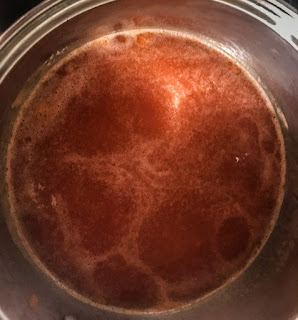
September 23, 2022 Moon under a Rainbow - Photo from Sarasota, Florida by Briana Bryant If you look carefully at this image underneath the top of the rainbow you can make out an image of a nearly full Moon. It's highly unusual to see such an occurrence. First, in order to see a rainbow we need both sunshine and rain. We must look in the opposite direction of the Sun. In order to have the rain, most likely the rain would come from a cloud that is in the distance causing the rain. The raindrops reflect the sunlight by means of the light entering the drops, and internally reflected from the far side of the raindrops, and back to the observers. As the light enters and leaves each surface the light is bent, and the amount of bend in the light depends on the index of refraction* of the water drop. Different colors of light exhibit a different index of refraction in water. That means that the different colors emerge at slightly different angl...
